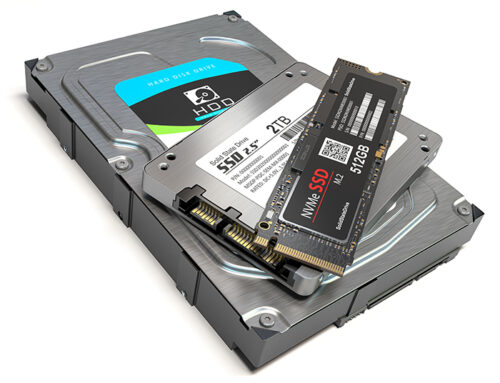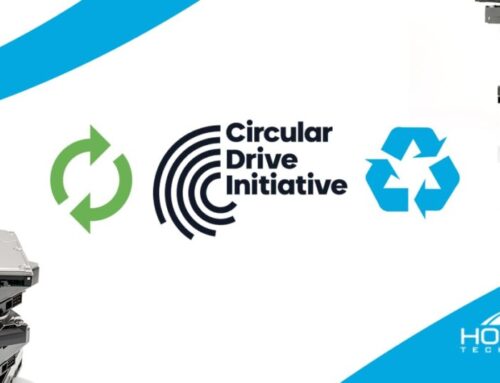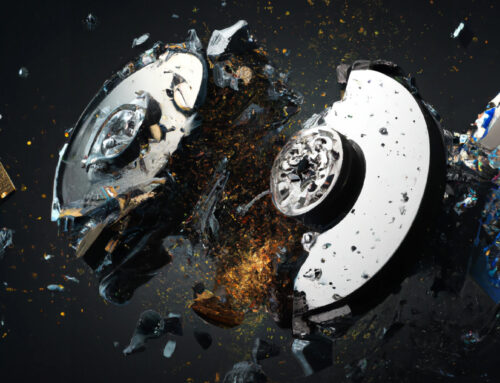Authors: Smith & Associates
Smith recently interviewed representatives from large hyperscalers, OEMs, and other key players in the electronics industry under the Circular Drive Initiative (CDI) and Open Compute Project (OCP) umbrella. Through these interviews, we gained a deeper understanding of carbon avoidance and carbon accounting as it pertains to companies that utilize electronic devices in their workflow processes and the changes that should be made for a more sustainable industry. The interviews highlighted key topics, including discussions on amortization, reuse, and insets as areas of concern and consideration.
Amortization and Carbon Responsibility
Amortization is a specific method derived from accounting that enables an organization to spread costs—typically of longer-term assets—over a period of time. For the purposes of our industry’s needs, amortization will be applied when discussing the longevity of an electronic device and its embodied carbon from the first user to the second user and to any subsequent users thereafter.
During the interviews, a central question was raised: Who is responsible for embodied carbon? Coming to a unanimous decision on carbon reporting standards is a multifaceted goal that would require the marriage of reporting standards, best practices, and clear accountability of carbon emissions. Currently, the accounting methods written into the Greenhouse Gas (GHG) Protocol do not incentivize actions beyond a device’s first use.
When a device is reused, the second user must account for the embodied carbon from manufacturing, assuming it has yet to reach or surpass its expected use period. This practice introduces the risk of double accounting—both the first and subsequent users could end up reporting the same embodied carbon.
While the resale of a product with lower embodied carbon benefits the second user, value recovery alone is not enough to incentivize the first user to establish robust reuse programs, as neither the first nor any subsequent users are adequately rewarded for their efforts in circularity. This is especially true for devices with longer use periods, such as memory chips and semiconductors, where the potential for extending the product’s life through reuse is significant, but the economic and carbon-saving incentives are minimal. Without clear financial or regulatory incentives to prioritize reuse over disposal and replacement, companies often choose the more convenient option of upgrading or discarding these devices, missing out on the opportunity to reduce waste and amortize embodied carbon.
Therefore, a more comprehensive system of rewards is needed to encourage first and subsequent users to actively engage in the circular economy. In response to these challenges, workgroup members have recommended the following solutions:
| Option | Perspective | Description | Incentives | Problems |
|---|---|---|---|---|
| No Carbon Impact for Circularity | Data Center Operator | First user takes 100% of embodied carbon on scope 3 | Value recovery for circularity | ICT devices have high embodied carbon, leading to a large impact |
| Amortization | Data Center Operator | Amortize embodied carbon over device use period (life) | First user takes % of carbon, second user takes % of carbon |
Reporting doesn’t exist. No consensus on product use percentage |
| Recertified Products | Second User | Low embodied carbon for second use since manufacturing goes to first | Incentive buyers of Recertified equipment Lower cost |
No incentive on carbon for first user |
Reuse and Carbon Accountability as a Path Forward
These recommendations would entail considering a device’s first user as the primary user, while subsequent users would be deemed secondary users. When ownership is transferred, the embodied carbon would be amortized over the device’s extended use period, distributing the carbon responsibility among users.
Additionally, the workgroup recommendation would allow secondary users to benefit from reduced or minimal carbon footprints from embodied carbon in their life-cycle assessments (LCAs). This incentivizes the reuse of products, eliminates double accounting, and allows companies to adopt circular practices that extend device lifecycles, all while reducing overall carbon emissions.
Carbon Insets: New Monetary Incentives for Circularity
As part of the interviews, Smith introduced the concept of carbon insets. Carbon insets offer a unique way to incentivize companies to reduce emissions by extending the life of products within their supply chains. Unlike offsets, which typically occur outside of a company’s value chain, insets focus on emission reductions occurring within its value chain. These carbon insets also require third-party validation, which would occur in a similar manner to that of carbon offsets. As models for carbon insetting mature, the industry needs to agree on methodologies and third parties to check the validity of these insets. Some models for carbon-inset validation and potentially future trading can be found in agribusiness and nature-based industries. By implementing carbon-inset projects, companies can take direct control over their carbon reductions, ensuring tangible decreases in their overall carbon emissions.
This approach strongly aligns with the concept of amortization, where carbon responsibility is shared among the first and subsequent users. By extending a product’s lifecycle through resale or refurbishment, companies can trade the insets generated from reuse in a carbon-trading market—much like how entities can trade any carbon credit—creating a financial incentive for keeping products in circulation longer.
Trading insets presents an ideal opportunity for companies to monetize their efforts toward avoiding emissions from extending product life. The product’s primary user will reduce their Scope 3 emissions through carbon-trading markets. The second and any subsequent users benefit from a recertified product with a lower carbon impact. This model encourages hyperscalers and OEMs to invest in sustainability and product-lifecycle management. By incorporating products with lower embodied carbon into their supply chains, companies will reduce their carbon footprints and can potentially trade or sell the avoided carbon with future maturation of the inset market. This can create a new revenue stream and strategic tool for these companies, all while also meeting their sustainability goals by lowering embodied-carbon costs.
Balancing Data Security
When considering hard drives, data-security concerns often override circularity efforts. For example, Seagate estimated that its hard drives have approximately six years of reliable use. However, if the drive is destroyed—rather than sanitized and resold—due to security concerns, the remaining years on the drive are then lost. In contrast, if the same drive is properly sanitized and placed back into the secondary market, the original owner’s carbon responsibility ends that year, and the remaining embodied carbon not accounted for by the original owner can continue to be circulated if the device is reliable.
For example, if an individual purchased a new hard drive, kept it for two years, and then sought to destroy it, they are still accountable for the emissions during years three through six, based on Seagate’s estimated product lifespan. However, if this same individual with the same drive decided to sanitize and resell after two years, their carbon responsibility would end at year two. The person who purchased this resold drive would benefit from a device with a lower carbon footprint, as the first two years of emissions would already be accounted for. These examples highlight the additional critical need for clear guidelines for sanitization so that drive manufacturers and users can prioritize reuse over destruction while balancing security and sustainability concerns.
Call to Action
As an industry, there is a large dependence on the GHG Protocol to guide carbon-accounting practices, but it’s clear that we need to go further to truly drive sustainability and circularity in the electronics sector. To ensure that older devices, particularly those with longer lifecycles, are properly managed, we must strengthen maintenance support, establish third-party partnerships, and build reverse-logistics hubs.
Looking ahead, there are three essential actions we must take to ensure success. First, data sanitization and security concerns must always come first to confirm that devices can be securely reused without compromising sensitive information. Addressing these concerns must be a priority across the industry to help prevent unnecessary destruction. Second, we need a unified approach to carbon accounting, specifically around the amortization of embodied carbon for reused products. By standardizing how we account for carbon across a device’s lifecycle, we can ensure that both primary and secondary users are fairly rewarded and incentivized to participate in the circular economy. Finally, we must establish a marketplace for verified and safe carbon-inset trading, which would create further financial incentives for big players, such as hyperscalers and OEMs, to extend product life and participate in this system.
Amortization, reuse, and insets are all crucial strategies for companies to take direct and innovative actions to reduce their emissions. Still, a unanimous decision on rules and regulations must be made so companies can take full advantage of sustainable incentives, ensuring the widespread adoption of these practices.
—————————————————-
Smith is a leading independent distributor of electronic components and provider of supply chain and datacenter infrastructure-management solutions. With 40 years of industry experience and more than 20 locations worldwide, Smith offers end-to-end procurement and product-lifecycle solutions for customers across industries and verticals.







Leave A Comment
You must be logged in to post a comment.